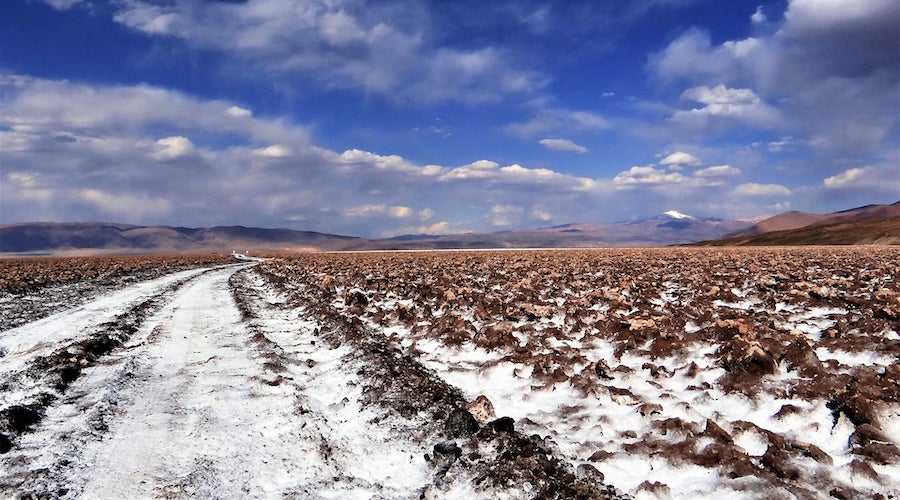Arcadium’s vast lithium portfolio lures Rio at the right time

From northern Quebec’s tundra to Argentina’s Andes Mountains and the plateaus of Western Australia, Arcadium’s lithium portfolio, brought together over almost 40 years, has lured Rio Tinto as it bids to be a top producer of the EV battery metal at an advantageous point in the market cycle.
Arcadium’s mix of active mines, lithium deposits filled with decades of supply, and some of the industry’s most advanced processing facilities would complement Rio’s output of copper, iron ore and other critical minerals and help the Anglo-American mining giant expand its footprint in the global energy transition.
So far the market is working in Rio’s favor, as plunging lithium prices since January, pressed in part by lower-than-expected electric-vehicle sales and Chinese oversupply, have stymied Arcadium’s growth plans and forced it to mothball some operations just to survive.
Rio – which produces no lithium currently – and Philadelphia-based Arcadium are in talks about a potential deal. Both companies have said they will not comment further.
The potential buyout’s cost-saving measures are winning support from some analysts, as well as Rio’s ability to “un-constrain Arcadium’s production growth,” said RBC Capital Markets analyst Kaan Peker, referring to the lithium company’s need to balance growth against funding requirements.
Given the market malaise, negotiations have begun with what some investors have criticized as a low deal range of $4 billion to $6 billion or higher for Arcadium, sources told Reuters.
Arcadium had been signaling since it was formed in January that it had a top bench of assets not fully appreciated by markets.
The company’s stock had dropped more than 50% before last Friday as it typically trades in tandem with lithium prices – as do the shares of many commodity producers – frustrating Arcadium’s leadership.
“We don’t believe the portfolio we operate can be found anywhere else in the industry,” Arcadium CEO Paul Graves told investors during a three-hour presentation to investors on Sept. 19.
Some Arcadium investors are pushing for negotiations to focus on a higher deal range, arguing that the global reach of Arcadium’s portfolio is unmatched even by industry leaders Albemarle and SQM and saying that lithium demand is projected to surge later this decade.
Arcadium expects its adjusted earnings to nearly triple from 2025 to 2028, for example.
Yet if the lithium market weakens further in coming months, Arcadium risks watching its expansion plans grow even more expensive and become further delayed, investors and analysts said.
Rio’s balance sheet could easily fund growth without straining the miner’s existing operations, investors and analysts said.
“Arcadium’s portfolio boasts long-life, low-cost projects … that would enhance Rio Tinto’s lithium growth ambitions in the long run,” said Morgan Stanley analyst Alain Gabriel, who estimates lithium could grow to become about 4% of Rio’s annual revenue should the Arcadium deal go through.
‘Strategic rationale’
For Rio, much of the appeal starts in Argentina, where it is already developing the Rincon lithium project.
Arcadium operates two nearby lithium mines and has three others under development. The company is also an expert in direct lithium extraction given its use in the country of a technology expected to be a growth area in coming years.
In Canada, Arcadium has two hard rock lithium deposits ready to be developed – yet the company lacks the cash to do so. Rio could help unlock production there to be ready to meet an expected surge in demand early next decade, analysts said. Arcadium flew a contingent of investors to its Quebec lithium processing site from New York after the September investor day.
“We can see the strategic rationale and potential positives for Rio,” said Bank of America Securities analyst Jason Fairclough.
Arcadium also controls Australia’s Mt. Cattlin lithium mine as well as processing facilities in Japan, the United States, the United Kingdom and China. Importantly for Rio, much of Arcadium’s existing revenue comes from Asia, leaving growth potential across the Western Hemisphere.
“The scale and the quality of these assets allows us to pursue a program of growth that really can be measured in decades,” Graves told the investor day.
Graves became the CEO of lithium producer Livent in 2018 when it was spun out of FMC, which had itself in 1985 bought Lithium Corp of America, which traces its roots back to World War Two. Graves retained the CEO role when Livent merged earlier this year with Australia-based Allkem, which had been formed in 2021 when Orocobre bought smaller rival Galaxy Resources and changed its name.
The merger between Allkem and Livent has proved tense at times as the legacy Allkem members of Arcadium’s board have clashed over strategy with the legacy Livent members, according to one source with direct knowledge of the board’s deliberations.
Both sides have an equal number of seats on the board, and disagreements have fueled stalemates that have proven difficult in some cases to overcome, the source said, adding that an acquisition could help solve the stalemate and secure funding for project expansion.
(By Ernest Scheyder, Clara Denina and Melanie Burton; Editing by Veronica Brown and Matthew Lewis)
{{ commodity.name }}
{{ post.title }}
{{ post.date }}


Comments